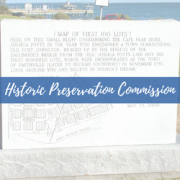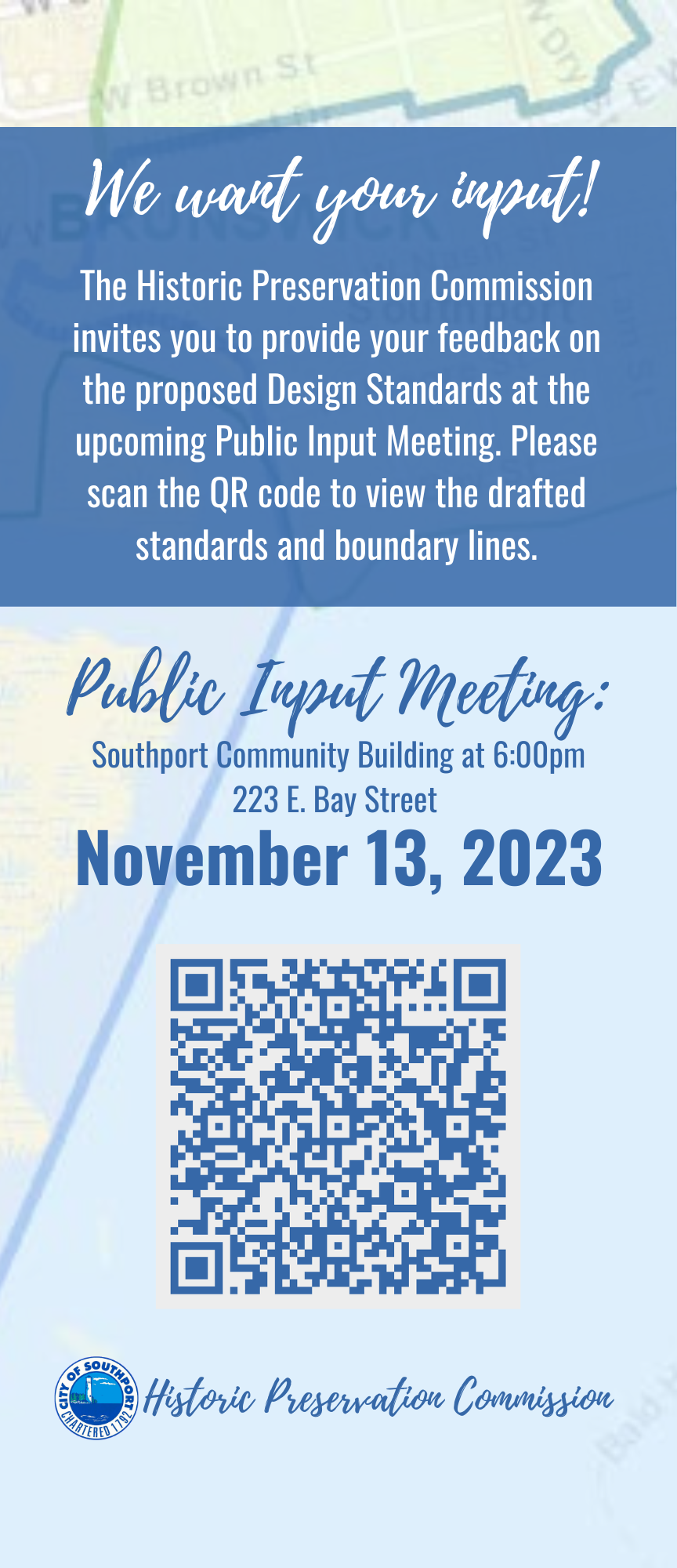
Meetings are held on the 1st Wednesday of each month at 4 p.m.
Location: Indian Trail Meeting Hall, 113 W. Moore Street
Historic Preservation Committee Mission
When is a Preservation Commission formed?
When a local government decides to provide for the preservation of the historical, cultural, or archaeological resources within its jurisdiction, it can pass an ordinance to create a historic preservation commission. Members of a preservation commission are selected by the local governing board from the general public. A majority of the members must demonstrate a special interest in history, architecture, archaeology, or related fields.
What power does a commission have?
A commission’s primary powers are (1) recommending to the local governing board properties to be designated as historic districts and landmarks and (2) reviewing applications from owners of designated landmarks and structures in historic districts who plan to make changes to their properties. A commission’s first charge is to conduct an inventory of the area’s historic resources. Its other powers include conducting a public education program and acquiring historic properties.
What are some considerations prior to joining a commission?
A Letter to George: How to Keep the Preservation Commission Out of Court and Avoid Being Sued, by Robert E. Stipe. Bob Stipe’s 1994 paper on understanding the responsibilities of a preservation commission and avoiding pitfalls in the work of a commission.
Information obtained from ncdcr.gov.

Historic Preservation Commission Members
| NAME | ADDRESS | CONTACT | APPOINTED | EXPIRATION |
|---|---|---|---|---|
| Charles Drew, Chair | 112 Park Avenue | (910) 477-2365 [email protected] | October 2022 | June 2025 |
| Rick Pukenas, Vice Chair | 119 N. Lord Street | (910) 750-1951 [email protected] | October 2022 | June 2025 |
| Bonnie Bray, Alternate | 515 Quarter Master Drive | (301) 741-6698 [email protected] | October 2022 | June 2026 |
| Josh Cline McGee | 195 Gentle Breeze Court | (704) 614-2956 [email protected] | October 2022 | June 2026 |
| Alexis Gore Graves | 510 N. Lord Street | (256) 653-1854 [email protected] | October 2022 | June 2025 |
| Bonner Herring | 112 W. Bay Street | (772) 263-1417 [email protected] | October 2022 | June 2024 |
| Jim McKee | 114 S. Davis Street | (910) 470-0529 [email protected] | October 2022 | June 2026 |
| Joanne Wesson | 107 River Watch Lane | (910) 264-4009 [email protected] | October 2022 | June 2024 |
| Lewis ‘Tal’ West, Alternate | 6159 River Sound Circle Drive | (704) 575-6048 [email protected] | October 2022 | June 2026 |
| VACANT, Development Services Director | 1029 N. Howe Street | |||
| Penny Tysinger, HPC Planner (PT) | 1029 N. Howe Street | (910) 457-7925 [email protected] | ||
| Maureen “Mo” Meehan, City Planner | 1029 N. Howe Street | (910) 457-7900 ext.1043 [email protected] | ||
| Tanya Shannon, Deputy City Clerk | 1029 N. Howe Street | (910) 457-7929 [email protected] | ||
| Dorothy “Dorrie” Dutton, Assistant City Manager | 1029 N. Howe Street | (910) 457-7900 ext. 1010 [email protected] | ||
| Robert Carroll, Aldermen Liaison | 1029 N. Howe Street | (910) 465-2717 [email protected] |

Local Historic Property Designations in North Carolina
Local governments in North Carolina–counties and municipalities–can choose to take advantage of state enabling legislation (General Statutes 160A-400.1-400.14) that allows them to create historic preservation commissions and to designate local historic districts and landmarks.
In the statute, the General Assembly sets forth its finding that, “The historical heritage of our State is one of our most valued and important assets. The conservation and preservation of historic districts and landmarks stabilize and increase property values in their areas and strengthen the overall economy of the State.”
What Local Designation IS and IS NOT: Local designation is conferred by a local governing board following a recommendation by its preservation commission. Commissions only exist where they have been explicitly created by the county or city, and only commissions created pursuant to state law can exercise design review over properties designated by the local governing board. However, commissions around the state are known by a few different names: historic resources and preservation commissions work with both districts and landmarks while district commissions work solely with districts, and landmark commissions work solely with landmarks.
The local designation should not be confused with listing in the National Register of Historic Places, which is a federal program administered by the state. Although some properties may carry both types of designation, the National Register and local designation are totally separate programs with different requirements and benefits. Also, local commissions should not be confused with other local historical organizations such as historical societies or museum groups.
Information obtained from ncdcr.gov.
Other Local Historic Preservation Commissions
Over 100 local historic preservation commissions are active across North Carolina. Click on the map pin below to see the contact information for the commission. Certified Local Government commissions have green pins.
View North Carolina Historic Preservation Commissions on a larger map. Click here for a static state map showing participating municipal governments in joint commissions with counties.
Information obtained from ncdcr.gov.

We invite the residents and community members of Southport to review the drafted Historic Preservation Standards and boundary map below and provide your input on the provided form. Your thoughtful responses will assist City of Southport Staff and the Historic Preservation Commission.
If you have questions regarding the Historic Preservation Commission, please contact City Planner Maureen “Mo” Meehan via email here.





